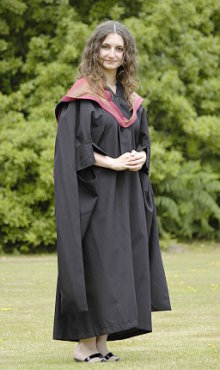Using Chaos Theory and Oscillators for Predicting Price Movement in FOREX
 Olga Gupta has recently passed her MPhil viva at the Wessex Institute of Technology with a thesis entitled “Using Chaos Theory and Oscillators for Predicting Price Movement in FOREX ”. The external examiner was Prof Taufiq Choudhry from the University of Southampton and the internal examiner was Dr Andres Peratta.
Olga Gupta has recently passed her MPhil viva at the Wessex Institute of Technology with a thesis entitled “Using Chaos Theory and Oscillators for Predicting Price Movement in FOREX ”. The external examiner was Prof Taufiq Choudhry from the University of Southampton and the internal examiner was Dr Andres Peratta.
Olga received her first degree in applied mathematics from the Kharkiv National University of Radioelectronics (KNURE), Ukraine. Afterwards she started her MPhil programme at Wessex Institute of Technology under the supervision of Prof Alexander Galybin.
In her thesis Olga investigated the problem of forecasting the price movement in the FOREX market while conducting speculative trade operations. While long time frames are used to conduct investment trade operations, speculative trade operations are normally conducted on short time frames where the most popular are H1, H4, D1, W1 (1 hour, 4 hours, 1 day, 1 week). Shorter time frames usually provide more rapid fluctuations of currency quotes than longer time frames (1 month and more) and it is more complicated to predict the currency quotes movement for short time frames than for long ones where the currency quotes time series are smooth (do not have rapid fluctuations or have few of them).
Before it was shown by other authors that profits on stock and currency markets adhere to a law of deterministic chaos for long time frames while quote time series on short time frames were still believed to be random due to frequent fluctuations. Olga has investigated quote time series of original values of currency quotes on short time frames with the methods of Chaos Theory and has shown that such time series also adhere to a law of a deterministic chaos and are not random. Based on this result, Olga has developed complex technical indicators which use memory present in chaotic time series and the Hurst exponent is used to calculate the values of the indicators. The developed indicators predict currency quote movement by discovering the ‘strength’ of memory of quote time series from their present values. In previous studies the method of Chaos Theory was used just for the time series analysis and other methods were used for prediction (for instance, neural networks). The effectiveness of the developed indicators has been tested by conducting the trade operations on a demo account over a six month period using the indicator signals. During the trade operations the developed indicators have demonstrated high effectiveness.
As a result of her research, both examiners recommended that Olga be awarded the degree of Master of Philosophy.
Grateful acknowledgement is given to the Foreign and Commonwealth Office for their support.

 Wessex Institute
Wessex Institute